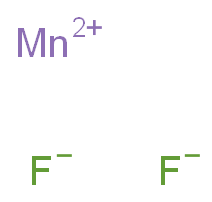 |
How to determine the cation-anion radius ratio for
I tried to calculate the ratio using the relationships:
and
but that gives with the given and parameters, which is impossible. has a rutile structure, so the predicted ratio should be between and
 |
You assumed that the cations touch along the direction. They don't. In most ionic compounds you have only anion to cation contact and, therefore, any attempt to determine ionic radii from lattice parameters gives only the sum of the two radii, not the individual values. There are exceptions such as lithium iodide, in which the lattice parameters enable determination of an ionic radius for iodide, but then they carry no information about the lithium ion.
In principle, you could use the data on lithium iodide, where there is iodide-iodide contact, to get a radius for just the iodide ion. Then you turn to manganese(II) iodide, where anions contact cations, and get the sum of the manganese and iodide radii. Then subtract the iodide radius to get radius for manganese ion. Use that plus the lattice information for manganese(II) fluoride to get the fluoride radius. It all works perfectly -- if the radius of a given ion is the same in all its ionic compounds. Maybe it is to sufficient accuracy, maybe it isn't.
 |